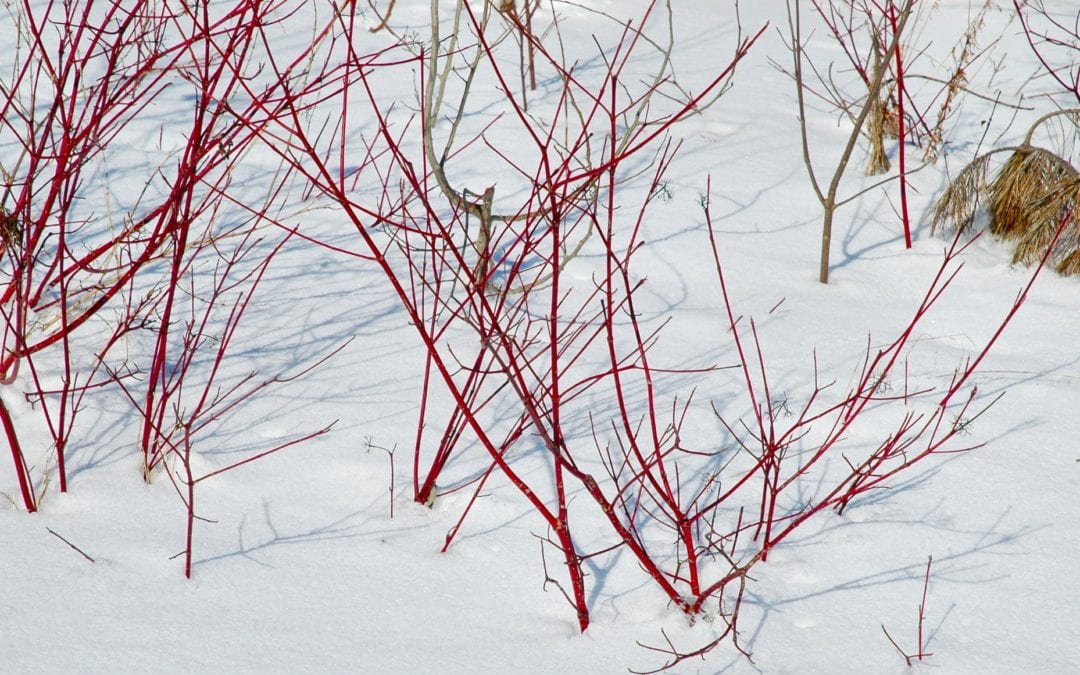Late winter is the best time of year to prune your deciduous trees and shrubs. We hope that one of these upcoming weekends will bring weather that is better for some outdoor gardening activities. There are a couple of important reasons to prune now. First, it’s much easier to see the branch structure of the tree or shrub when there aren’t any leaves to obscure problems. And, there is less chance of transmitting diseases and attracting insects to fresh wounds.
So let’s get our pruners, loppers and saws cleaned and sharpened and take them for a spin. A sharper tool is a safer tool. And before you begin cutting, remember to work safely. Wear some eye protection to prevent injury from sawdust and sharp twigs. If you are pruning high in the tree or with a chainsaw, please work with a partner. We don’t want to hear about any of you falling from ladders.
The goal of pruning is to highlight a plant’s natural features, but where do you begin? Start by having a clear purpose in mind and identify exactly what you want to accomplish. Are you limbing up that maple tree so that it’s easier to garden underneath it? Is your dogwood hedge overgrown? Have your lilacs stopped producing flowers? The answers to these kinds of questions will guide your pruning.
The first branches that you want to remove are any that are dead or diseased, no matter where they are located on the tree. Next, take out all of the suckers and water sprouts. Suckers grow straight up from the base of the trunk. Water sprouts grow the same way but are produced from horizontal branches.
Once all the whippy growth is gone, your next aim is to thin the canopy of your tree or shrub. This increases air circulation, helping to prevent the spread of fungal diseases. Start by removing any crossing or rubbing branches, and then move onto areas of the plant that appear over-grown. Work slowly and take plenty of breaks to step back and look at your progress.
You don’t want to leave stubs, so always prune back to a bud or branch, keeping in mind that the new branch will grow in the same direction of the bud. Ideally, you’ll want to choose a bud that faces upward and outward.
While you’re pruning, watch for egg masses of tent caterpillars and gypsy moths and remove them. It’s also a great time to scout for the symptoms of any disease issues like unusual swelling, open lesions or darkened areas. If you find and remove any diseased branches, be sure to disinfect your pruning tools between each cut with a 10% solution of rubbing alcohol and water.
If we survive the next Polar Vortex, take advantage of the nicer weather and do a little garden walk-about. The buds will soon be fat with the promise of spring. Most of the winter berries still have a lovely color. Say hello to your plants and remind yourself that spring is on the way.

